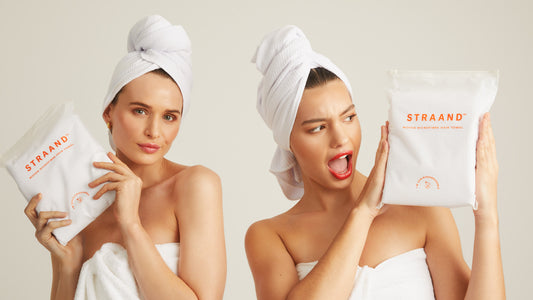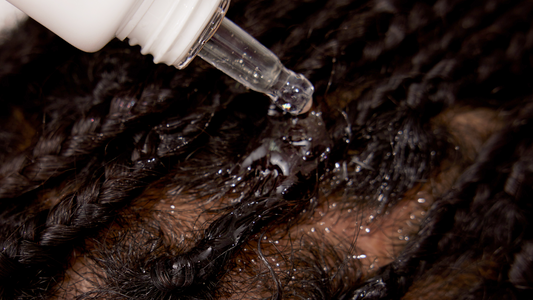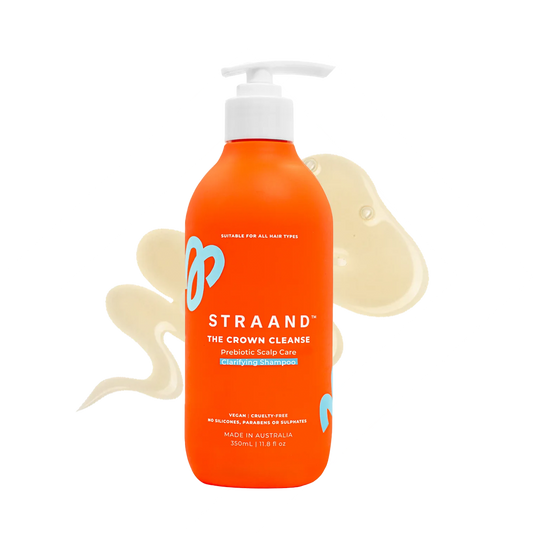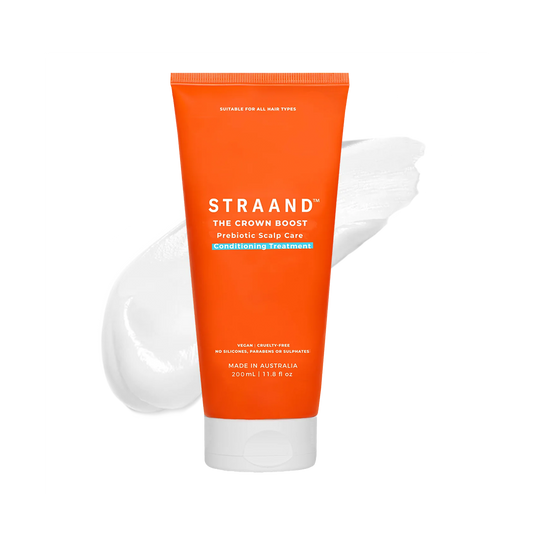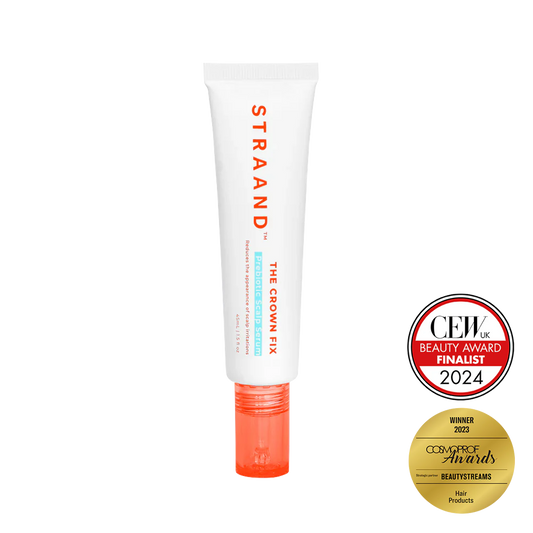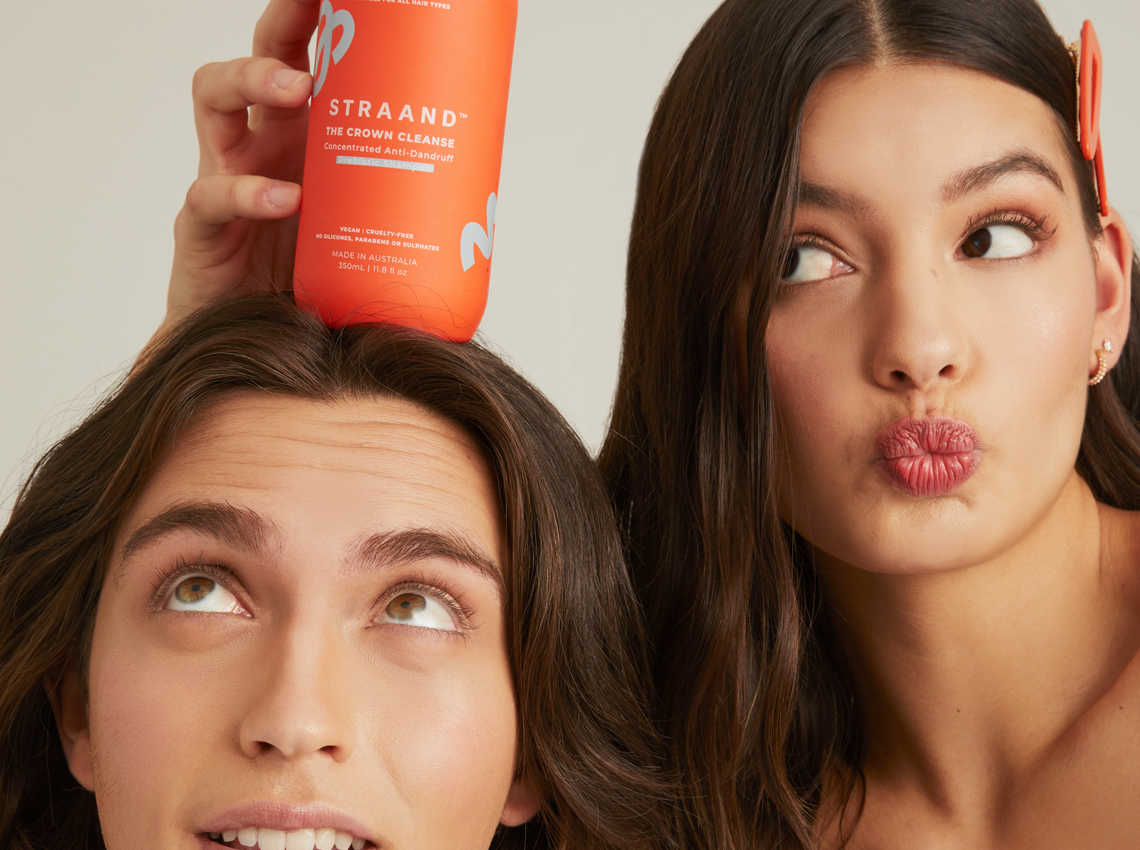Our scalp is an extension of the skin on our face. It’s a living, breathing organ that regulates healthy hair growth, but how much do we actually know about it?
The truth is the scalp microbiome is an insanely intelligent organ that hosts a family of healthy bacteria that support the balance of scalp skin and support healthy hair growth.
Guy Parsons, hair stylist, explains, our scalp essentially acts as, “a flower bed and soil from which your hair grows.” So with that in mind, understanding the scalp microbiome is key to keeping hair follicles happy.
With ‘scalp health’ searches on Google up 300 per cent since 2020 and the hashtag #scalp has over 700 million views on TikTok, according to Glamour, now feels like the perfect time to update our scalp knowledge.
With search terms #scalpcare #scalpcheck and #scalptreatment the most popular queries trending, it’s clear there's a dedicated audience out there wanting to give their crowns the royal treatment.
In today’s class we’re going to run you through: what the scalp microbiome is, how scalp care promotes healthy hair growth and the signs of a happy vs unhappy scalp to keep your scalp well adjusted all year round.

Let’s talk scalp anatomy
The scalp, defined by Cambridge Dictionary is ‘the skin on… a person's head where hair usually grows.’ It’s not quite this simple though. The skin on the scalp is multi-layered, with five layers in total and two main layers you need to know about: the epidermis and the dermis.
The dermis is the one we need to pay attention to as it’s where our hair follicles, sweat glands and dermal papillae (cells that support hair formation, growth, and cycling) live and is a crucial part of the scalp either thriving or becoming stressed.
Which leads to the next layer of learning, the scalp microbiome itself. To get a little more technical, the scalp skin (the dermis) has an ecosystem of live bacteria that live within it. This ecosystem is known as the scalp microbiome.
What is the scalp microbiome exactly?
Think of it as a family of live bacteria (microbes), made up of a range of different personalities (the two main bacteria being cutibacterium and staphylococcus) that live together on the surface of the scalp and feed on sebum (hair’s natural oil).
A happy scalp microbiome is one where all the bacteria play well and work together as a team to strengthen the skin’s surface layer. It creates a loving habitat for follicles to thrive and roots to grow into healthy Straands.
An unhappy scalp microbiome could be compared to a family that doesn’t play well together. In this environment, one (bacteria type) dominates over the others, creating disruption, drama and a discontented environment where hair feels unsupported and less confident to naturally thrive in. And no one likes drama...

5 Lessons In How To Get A Healthy Scalp
-
Start a scalp care routine stat
Adopt the same mindset you have with your skincare routine and apply it to your scalp.
We recommend the following as a scalp care guideline:
1 x prebiotic shampoo
1 x prebiotic conditioning treatment
1 x prebiotic scalp scrub - once a week
1 x prebiotic scalp serum - as needed and desired
-
Learn what it likes
Rather than wait for warning signs, such as dandruff or oily roots, get on top of your scalp care by learning what it likes, that'll guide you towards a balanced microbiome.
Just as the skin on our face can be prone to being more naturally dry or oily, so too can our scalp skin. Becoming attuned to your scalp and its natural tendencies will help keep you proactive in treating it.
Observe how it responds in different environments and try answering the following questions:
- How many days does it take for your roots to get oily before you wash hair?
- Does your scalp skin react in different weather or climates?
- How does your scalp react if you’ve used a lot of hair product (dry shampoo, hairspray, etc)?
- When does your hair feel its most healthy self?
- Does your hair grow thicker, stronger or more frequently when you incorporate certain products?
-
Power up your prebiotic intake
You know how your gut thrives on prebiotic friendly foods? Well the scalp works in the same way when you feed it specific prebiotic scalp care products.
What are prebiotics? In the most simple sense, prebiotics are compounds in food (or other nutrients) that induce the growth or activity of the most beneficial microbiota bacteria and fungi.
By choosing scalp care shampoos, conditioners and scalp treatments that contain prebiotics designed to support the scalp, you’re essentially protecting the biome - balancing and enhancing it all at once.
Meet one of our key ingredients that supports healthy hair growth and a strong skin barrier: DEFENSCALP™
DEFENSCALP™ is a potent prebiotic that contains rosebay extract and is clinically proven to combat hair imbalances, by reducing sebum production and rebalancing the scalp’s microbiome to bring the hair’s habitat back into homeostasis.
-
Soothe away stress
Scalp stress is a thing, and it’s gotten worse since the pandemic according to the New York Times.
When our body becomes stressed (emotionally, physically or mentally) it produces more of the hormone cortisol. As cortisol levels increase, the change in hormones can lead to biochemical impacts to our skin and scalp, with cortisol said to have a direct correlation to our hair follicles. Meaning, if stressed enough our scalp skin can react and in some cases lead to hair thinning or falling out.
So if stress is starting to come up for you, to keep your biome balanced consider a scalp scrub and regular head massage as part of your morning or evening wind down routine.
In addition, a healthy diet, mindful breathing and scalp treatments with prebiotics (such as DEFENSCALP™) found in STRAAND scalp care collection or vitamin B can also help decrease scalp stress, according to Vogue.
-
Look out for warning signs 👀
The scalp is highly intelligent and it easily will let you know if it’s unhappy and or imbalanced. A compromised scalp microbiome will tend to react and flare up if the microbiota is out of sync. The most common warning signs that your scalp is compromised include: psoriasis, dandruff, hair thinning, hair loss and oily roots.
These symptoms are proven by science to be influenced by scalp conditions, so it’s a no-brainer when it comes to determining whether an imbalance is present.
If any or all of these scalp or hair imbalances flare up, it's a clear warning sign you need to bring order back to your biome.
Begin a scalp care routine and see how it supports scalp and hair restoration as a first protocol. If symptoms persist or err on the extreme side (be it discomfort, pain or hair loss), see a doctor for recommended treatment.For more on scalp care or to stay in-the-know see our Straand FAQ page.








